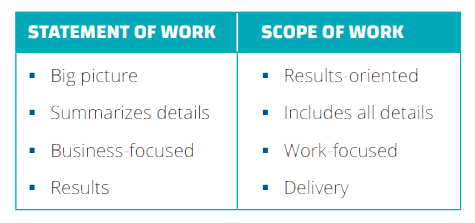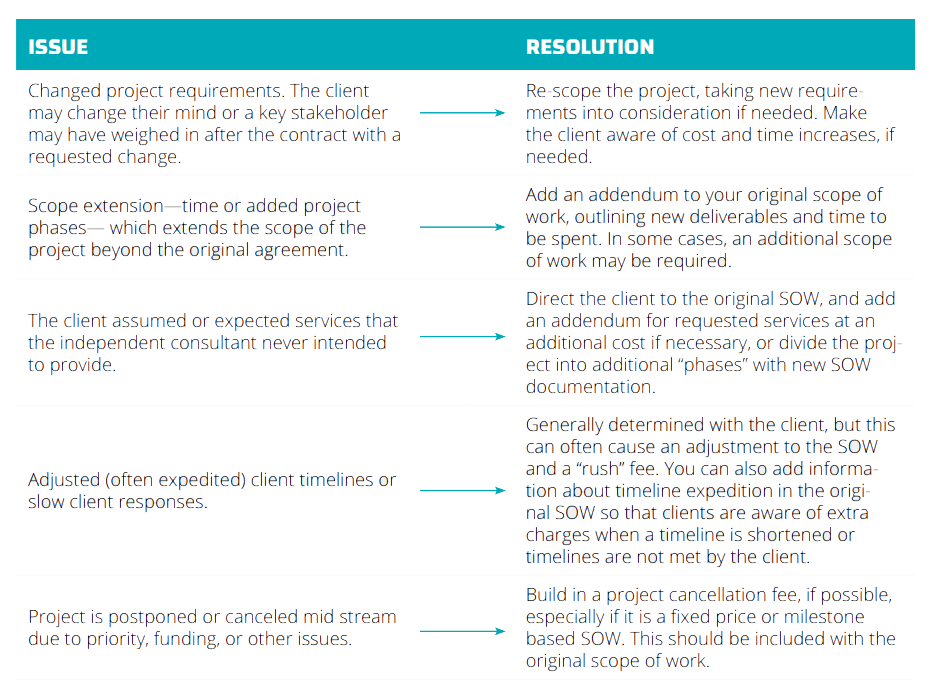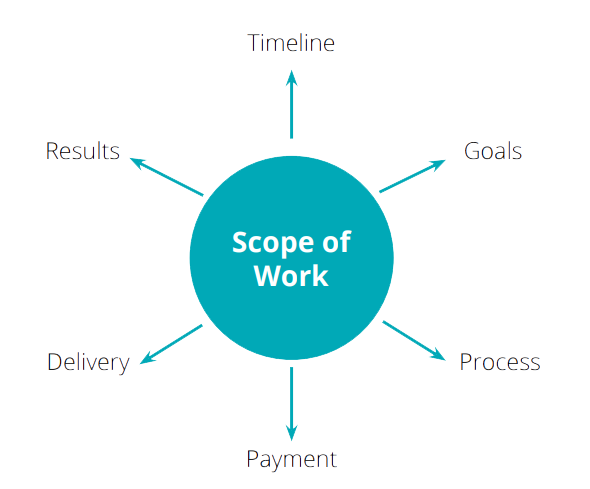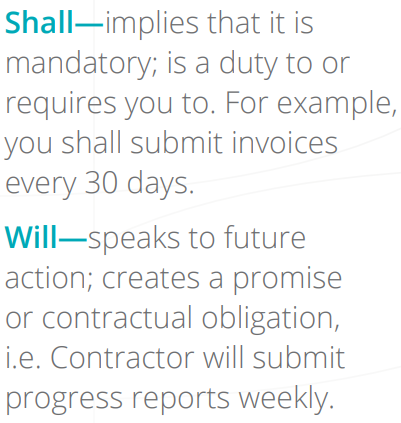

Use this step by step guide and templates to create a Scope of Work document that outlines the basic details of your project with a client, as well as highlights key terms, such as payments, revisions, and key deadlines. Much like a contract, a scope of work is a foundational document for any Independent – Client relationship.
Before starting a new project, Independent Workers are often asked to prepare a Scope of Work document that outlines the terms of their projects and details items like payment terms with a client. This is a straightforward document, but if you’re compiling one for the first time, the structure and importance of a Scope of Work, or SOW for short, can be intimidating.
This guide will offer you step by step help to creating a document that outlines the basic details of your project with a client, as well as highlights key terms, such as payments, revisions, and key deadlines. Much like a contract, a scope of work is a foundational document for any Independent – Client relationship.

The scope of work articulates the details of a project including tasks, materials and equipment (if appropriate), activities, deliverables and time frame. It sets clear expectations upfront and serves as a guiding post to keep you and the client on track.
To understand the importance of a detailed SOW, let’s pretend you are hiring a consultant to develop a mobile app. A properly-detailed Scope Of Work defines what the final product should do, then breaks out into more detail on what development platform it should be built on (Ruby, Python, etc.), what it should look like, how users will interact with it, and key features/components that make up the final product, and how much it costs for the final product.
If the SOW is not detailed enough, and simply says “consultant to build an app accomplishing X or Y task,” the resulting “grey area” leaves room for the consultant to build a product that doesn’t integrate with a client’s existing systems, match design criteria, or miss key steps in the use flow. Cost could also become a factor if the client demands extra rounds of revisions, or asks for ongoing maintenance and development not detailed in the initial scope.
The SOW’s main job is to take a client’s vision and break it into concrete details. Precision is important in any SOW, as ambiguity can lead to problems during the course of a project.
It is also important to remember that a Scope of Work becomes part of a contractual obligation to a client. This makes it even more important to clearly articulate details.
GOAL: ELIMINATE FRUSTRATION
One of the main goals of the SOW is to eliminate frustration between consultant and client, setting clear expectations for what will be accomplished, for how much, and when. Some clients can be masters of “scope creep.” meaning that they add on new requests and requirements not set forth in the original scope of work.
Scope creep (n.): To add new provisions, tasks, or expected deliverables that are outside an existing scope of work.
Work that is not part of the Scope of Work can create frustration both for the consultant and the client. It can cause a breakdown in a business relationship and impede the progress of the original project. While it’s important the SOW to be clear and detailed, it’s wise to not make it too restrictive. Projects almost never go exactly as expected and building flexibility into the scope allows the ability to react to internal or external market changes.
COMMUNICATION IS KEY
The SOW is a communication tool: use it to discuss and agree upon objectives and expectations. Develop this document at the very beginning of a client engagement, using it if possible in your initial client meeting to manage expectations and define a project plan. It can also be used as a point of negotiation in the buying phase.

If the client wants to negotiate price, you can adjust the Scope of Work, rather than your fee, to fit a client budget. Of note, adjusting the scope rather than the fee also creates an opportunity to provide a phased-in approach. For example, a consultant can break down a larger SOW into multiple projects that can be implemented over time.
As anyone experienced in the request for proposal (RFP) process knows, an SOW is typically included in the requirements.
From the client side, it is used to communicate the goals and expected results of the project and ensure that key issues are not overlooked. Because this document is often requested before a project is awarded, there is some difference between a proposal Scope and a finalized Scope—often the latter is a revision of the documentation provided during the initial proposal.
Scopes often vary widely by industry and by client. Some clients, such as government entities and universities, may have very specific requirements for an SOW.
Outline these items in your Scope of Work:
The SOW will be customized based on your engagement, client and industry.
For example, a technology SOW may be comprehensive and include equipment, testing and very detailed milestones. A level-of-effort SOW, by contrast, may have a certain number of hours as the deliverable and not require the level of detail. You may also have a performance based SOW in which you have flexibility in how you meet the client’s objectives.

Your dedicated business manager at MBO Partners is happy to help review contracts, SOWs and more as part of your engagement. We can offer advice to help limit “scope creep,” negotiate optimal payment terms on your behalf, and more.
Writing Contractor-Friendly RFPs isn’t as difficult as it looks. This article walks you step-by-step through the ideal RFP.
Before you can write a good SOW, you need to ensure that you have a clear understanding of the project from the client.

Your SOW should be error free, and easy to read. You will also want to be aware of words that have a legal interpretation.
As in general business writing, refrain from using abbreviations and acronyms. Do not assume that abbreviations are universally understood or used, even within the same industry. If they are necessary to include, be sure to define them. Because it is part of the contract, it is tempting to use the passive voice. For example, “Writing services shall be provided to Company Y,” rather than “Company X will provide writing services to Company Y.” The active voice does a better job of clearly outlining tasks and responsibilities.
Be consistent throughout the document. For example, if a scope of work includes public relations, avoid alternating between “PR” and “public relations.” Use the same term to describe the same concept throughout the document. When writing a scope, be direct and specific, clearly describing the services to be performed and the deliverables expected. Never assume that the client will know what is intended; state it in clear language. A good Scope of Work lays the foundation for a successful project. It creates the tools to properly plan and manage a client project, which, in the long run, means lasting client relationships. We hope that you feel better prepared to manage your client projects after reading this guide.
One of the most essential skills for any solopreneur to have is the ability to negotiate business deals. The way in which independent contractors negotiate can make or break their business. If handled correctly, negotiations can solidify relationships with clients, strengthen connections with vendors, and help you to grow your business.
Here is a list of what to include in your Scope of Work:
Want some extra help? Use our template! We created a sample version that you can download. Use it as an aid to create your first SOW or as a review tool for your existing scope document.